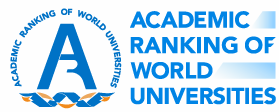 This year’s edition of the Academic Ranking of World Universities or ARWU marks a significant milestone. It is the 15th consecutive year in which the world’s top 500 list has been published. With this edition, ARWU includes for the first time an additional list of 300 universities that it deems to have the potential to break into the top 500.
This year’s edition of the Academic Ranking of World Universities or ARWU marks a significant milestone. It is the 15th consecutive year in which the world’s top 500 list has been published. With this edition, ARWU includes for the first time an additional list of 300 universities that it deems to have the potential to break into the top 500.
While the United States continues to dominate the ranking, it is no longer the pacesetter or the educational system that others seek to emulate: 48 of the US universities are in the world’s top 100 in 2017 compared to 58 in 2003, but there are 26 fewer universities in the top 500 in 2017 than in 2003.
The ARWU is a Chinese project that has been a success story in the age of universities’ globalisation.The original idea of the Chinese government was to measure the relative progress of its universities towards world-class status.
In the 2003 edition, there was no Chinese university in the top 100, but there were 19 among the top 500. Fifteen years later, there are two Chinese universities in the world’s top 100 and at least four with prospects to make it through in the coming years. Overall, there are 57 in the top 500 in 2017. There are another 55 Chinese universities that are ranked in the 501-800 band with significant scope to make it into the world’s top 500 within the next five to 10 years.
An inherited bias in this ranking is its measurement of prestige. This is defined by the number of Nobel laureates or Field medallists there are among the academics and alumni of an institution. In addition, the focus on highly cited researchers gives unwarranted power to those who are at the top of their research fields. They are the Hollywood stars of academia.
Nevertheless, ARWU, together with the other two ranking schemas (QS and Times Higher Education), has created a competitive order that universities wish to be part of. Rankings have become the framework that distils the impact, effectiveness, quality and standing of an institution in the national, regional and global arena.
Aside from the additional 38 Chinese universities ranked in 2017 compared to 2003, Australia is the next country that has gained the most. Of the 43 Australian universities, 23 are included in the world’s top 500 and another four are within the 501-800 band.
South Korea has also seen an increase in the number of its universities in the top 500, up from eight in 2003 to 12 in 2017. There are another 16 Korean universities in the 501-800 band and it is predicted that some of them could make it into the 401-500 band soon.
Portugal went from having one university in the top 500 in 2003 to five in 2017. Saudi Arabia did not have any universities in the top 500 in 2003, but it now has four.
By contrast, the US has lost the most at 26, down from 161 in 2003 to 135 in 2017, followed by Japan, which has 17 institutions in the top 500, down 19 from 36 in 2003. Even though there are another 55 US and 19 Japanese universities in the 501-800 band, it is unlikely that in the foreseeable future their numbers will increase in the top 500.
Other countries with a noticeable decline in the number of their universities represented in ARWU’s top 500 between 2003 and 2017 are Italy, Canada, Germany, United Kingdom, France and Spain.
Through the lens of the ARWU, we can see significant geopolitical shifts in the global university landscape and that in turn provokes questions about what the future may look like for universities and higher education systems in general.
The weakening ranking position of educational systems in developed and mature economies (like the US and Western Europe) is likely to continue. While the rise of Asia (mainly due to China) is likely to gather pace over the next 10 years, there is slower progress occurring in Central Europe, Latin America and Africa.
Brazil, Russia and India are yet to have an impact in the rankings. While there are encouraging signs of improvement, they are years away from challenging the status quo.

